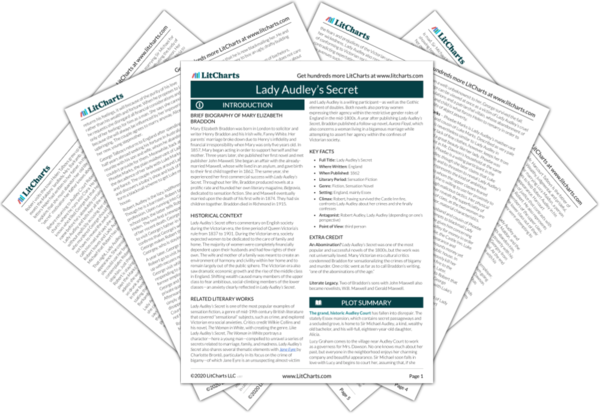Again, Lady Audley points out how circumstantial evidence can easily be explained by coincidence, but now she realizes the depth of Robert’s investigation. Lady Audley’s silence suggests the internal emotional turmoil Robert’s revelations cause within her, turmoil that will build towards the climax of the story. In Volume 3, the reader will learn that the well they pass by is the same well Lady Audley pushed George into on the day he disappeared.
